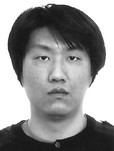Comparative analysis of strength qualities in boxing, kickboxing and taekwondo
Фотографии:
ˑ:
Postgraduate student Li Zhiyun1
Dr.Hab., Professor E.V. Kalmykov1
1Russian State University of Physical Education, Sports, Youth and Tourism (SCOLIPE), Moscow
The study was designed to make a comparative analysis of the strength qualities in modern boxing, kickboxing and taekwondo. Sampled for the study were 32 athletes whose strength qualities were tested by an isokinetic muscle strength test to produce the following five test rates: extensor rotation peak moment; body mass extensors rotation peak moment; flexors rotation peak time; body mass flexors rotation peak moment; and the extensors-to-flexors ratios.
It was found that the left elbow extensors absolute strength and speed strength is meaningfully higher in the kickboxing group versus the boxing and taekwondo ones; albeit the left elbow flexors absolute strength and speed strength is significantly lower in the kickboxing group versus the boxing group. The right elbow flexors and extensors absolute strength in the boxing group was tested meaningfully higher than in the kickboxing; and the right elbow extensors speed strength in the kickboxing group was tested meaningfully higher than in the boxing and taekwondo ones.
Based on the study data and analysis, we recommend that the boxing and taekwondo training systems should give a higher priority to the left elbow extensors absolute strength and speed strength training tools, particularly in boxing. Kickboxing training systems are recommended to make a special emphasis on the right elbow flexors and extensors absolute strength building tools; and the boxing systems should give more attention to the right elbow speed strength trainings.
Keywords: athletes, types of martial arts, testing and rehabilitation system.
References
- Morris A. Silovye sootnosheniya podkolennogo sukhozhiliya kvadritsepsa begunov na srednie i dlinnye distantsii v kolledzhakh [Strength ratios of quadriceps hamstring in middle and long distance runners in colleges]. Vrach i sportivnaya meditsina. 1983. no. 11. pp. 77–78.



